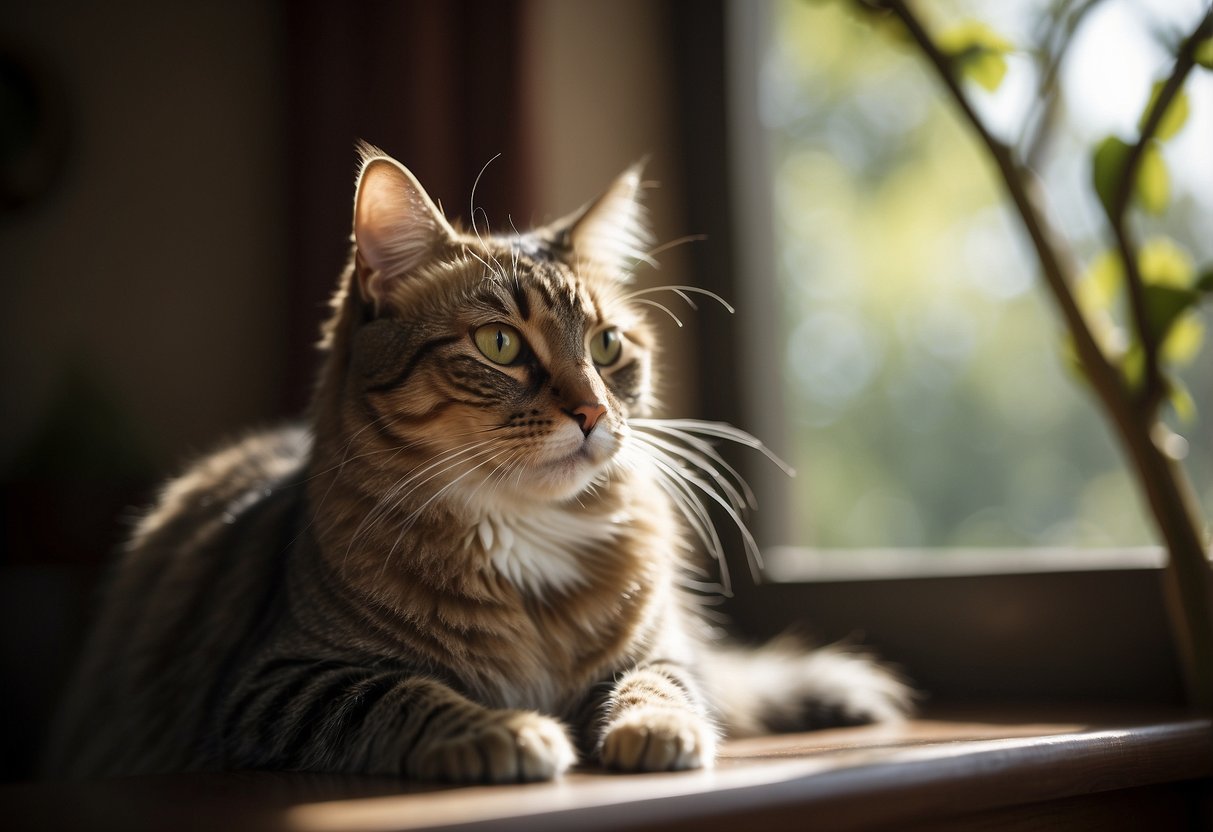
When to Consult a Veterinarian
Determining when to consult a veterinarian involves observing specific symptoms and changes in behavior. Persistent vomiting, diarrhea, or noticeable weight loss are red flags. Changes in eating or drinking habits, lethargy, or breathing difficulties also require professional evaluation.
Behavioral changes like excessive meowing, aggression, or withdrawal can be signs of physical discomfort or psychological distress. Regular check-ups help in early detection of potential health problems, ensuring your feline friend stays healthy. Consulting a veterinarian for any concerning symptoms or behaviors ensures timely intervention and treatment.
Cat Communication With Humans
Cats use various methods to communicate their needs, wants, and feelings to humans. Understanding these signals can strengthen the bond between you and your feline friend.
Attention-Seeking Behaviors
Cats often seek attention through vocalizations, physical gestures, and specific actions. A cat may meow persistently at different pitches, each sound indicating something unique. For example, a high-pitched meow may signal excitement, while a low-pitched one can denote frustration.
Physical contact plays a significant role. Head-butting is a sign of affection, letting the owner know the cat feels safe and trusts them. Some cats also paw at humans, a gentle reminder that they want something, perhaps food or playtime.
Tail movements are very telling. A tail held high usually means contentment, while a flicking tail can indicate irritation. By observing these behaviors, one can decipher what a cat is trying to communicate, ensuring they feel understood and cared for.
Responding to Human Actions and Commands
Cats are known for their independent nature, yet they do respond to human actions and commands. They often come to recognize their names and will respond when called, especially if they have positive associations like treats or affection linked to their name.
Training a cat to react to specific commands, like ‘sit’ or ‘stay,’ is possible with consistent positive reinforcement. Using treats as a reward helps solidify the behavior. Cats may also respond to body language; for instance, kneeling down may invite a cat to come closer.
Observing a cat’s reactions to human behaviors can enhance communication. Friendly gestures, such as slow blinking, can be reciprocated by the cat, demonstrating mutual trust and understanding. By responding appropriately, humans can build a harmonious living environment with their feline companions.
Training and Behavior Modification
Cats can be trained using positive reinforcement methods and it’s essential to address and correct unwanted behaviors promptly. Employing these techniques ensures a harmonious relationship between you and your feline friend.
Positive Reinforcement Techniques
Positive reinforcement is an effective way to train cats. It involves rewarding desirable behaviors to encourage repetition. Rewards can include treats, praise, or playtime, depending on what motivates your cat. Always reward immediately after the desired behavior occurs to create a clear association.
Consistency is crucial. Repetition ensures the cat understands the connection between their action and the reward. Short, frequent training sessions are more effective than longer ones, as cats have limited attention spans. Patience is key; some cats may take longer to respond to training.
Avoid using punishment. Negative reinforcement can lead to fear and anxiety, which may worsen behavior problems. Instead, focus on reinforcing positive actions and redirecting undesirable behaviors through distractions or alternative actions.
Correcting Unwanted Behaviors
When addressing unwanted behaviors, it’s important to identify the root cause. Common issues include scratching furniture, inappropriate urination, and excessive meowing. These behaviors can often be signs of underlying health issues, stress, or lack of stimulation.
Start by providing appropriate alternatives. For instance, offer scratching posts to deter furniture scratching. If the cat is scratching because of anxiety or boredom, additional playtime and mental stimulation can help.
Redirect their attention. If you catch your cat engaging in an unwanted behavior, distract them with a toy or treat. Over time, they will learn to associate the unwanted behavior with a different, acceptable activity.
Consistency and patience are essential. Avoid yelling or physical punishment, as these can harm the trust between you and your cat. Positive reinforcement and redirection create a more effective and humane approach to behavior modification.



